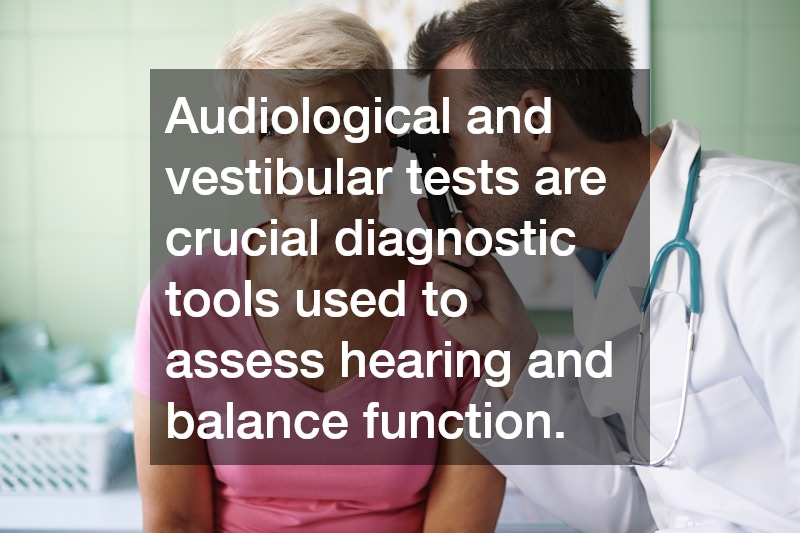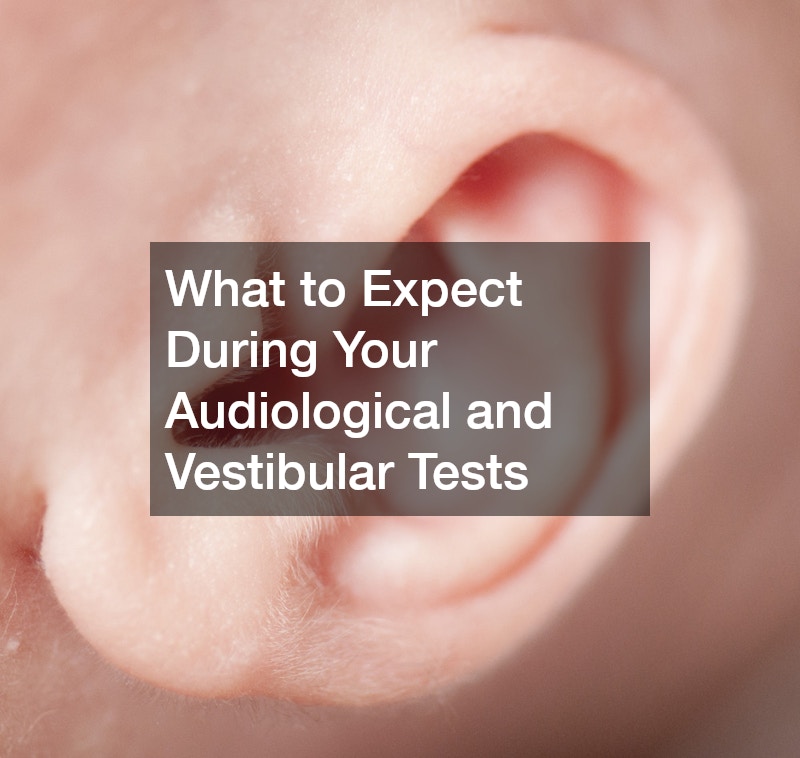
Audiological and vestibular tests are crucial diagnostic tools used to assess hearing and balance function. Whether you are experiencing hearing loss, dizziness, or balance issues, these tests provide valuable insights into the health of your auditory and vestibular systems. If your doctor has recommended these tests, understanding what to expect can help ease any concerns and prepare you for the process.
In this article, we will walk you through the steps of a typical audiological and vestibular test, including what these tests measure, how they are conducted, and what the results might mean for your treatment plan.
What Are Audiological and Vestibular Tests?
Audiological tests are used to evaluate your hearing abilities. They assess how well you hear sounds of various pitches and volumes and how well you can differentiate between different sounds.
Vestibular tests, on the other hand, focus on your balance system, which is located in the inner ear. These tests determine whether your inner ear is functioning correctly and contributing to balance or dizziness problems.
Audiological and vestibular tests are often performed together when there is a suspicion of inner ear problems affecting both hearing and balance. The results provide a comprehensive view of how the auditory and vestibular systems are functioning.
Preparing for Your Tests
Before your audiological and vestibular tests, your healthcare provider may give you specific instructions to ensure accurate results. These might include avoiding caffeine, alcohol, or certain medications that can affect the results. You should also wear comfortable clothing, as some vestibular tests may involve movements that could affect your balance.
Your provider will also ask you about your medical history, current symptoms, and any medications you are taking. It’s essential to share any details about dizziness, vertigo, hearing loss, or balance issues so the tests can be tailored to your specific needs.
Audiological Tests: What to Expect
Audiological tests typically begin with a series of exams designed to evaluate your hearing function. Here are the common types of audiological tests:
- Pure Tone Audiometry: This test measures your ability to hear sounds at different frequencies (pitches) and intensities (volumes). You will be seated in a soundproof booth, wearing headphones. The audiologist will play a series of tones through the headphones, and you will be asked to indicate when you hear each sound by pressing a button. This test helps determine the quietest sound you can hear at different pitches.
- Speech Audiometry: In this test, the audiologist assesses how well you can understand speech. You will listen to recorded or spoken words and be asked to repeat them. The audiologist will present the words at different volumes to determine the softest speech you can understand and how clearly you can hear speech in a noisy environment.
- Tympanometry: Tympanometry evaluates the function of your middle ear by measuring how your eardrum responds to changes in air pressure. A small probe is placed in your ear, and the device changes the air pressure to move your eardrum. This test helps identify issues such as fluid buildup, ear infections, or problems with the bones in the middle ear.
- Otoacoustic Emissions (OAEs): This test measures sound waves produced by the inner ear in response to auditory stimulation. A small probe is placed in the ear canal, and the test detects whether the hair cells in your inner ear are functioning properly. OAEs are often used to screen for hearing loss in newborns and young children but can also be used in adults.
Vestibular Tests: What to Expect
Vestibular tests assess the balance system located in your inner ear. These tests are especially important if you are experiencing symptoms such as dizziness, vertigo, or balance difficulties. Common vestibular tests include:
- Videonystagmography (VNG): VNG is one of the most commonly used vestibular tests. It measures involuntary eye movements (nystagmus) that occur in response to specific movements or visual stimuli. You will wear special goggles that track your eye movements as you are asked to follow visual targets or move your head and body in different directions. This test helps determine whether your balance issues are related to the inner ear or the brain.
- Rotational Chair Testing: In this test, you are seated in a motorized chair that rotates at different speeds while your eye movements are monitored. The goal is to assess how well your inner ear senses motion and helps control your balance. This test is often used when other vestibular tests are inconclusive.
- Caloric Testing: Caloric testing evaluates how well your vestibular system responds to temperature changes. Warm or cool water or air is introduced into your ear canal while your eye movements are monitored. The temperature changes stimulate the inner ear, causing involuntary eye movements. This test can help identify whether one side of your vestibular system is functioning differently than the other.
- Posturography: Posturography assesses how well you maintain balance in different situations. You will stand on a platform that measures your balance while the platform moves or tilts, or while visual or sensory information is altered. This test helps pinpoint whether your balance problems are related to your inner ear, vision, or other systems that contribute to stability.
Audiological and vestibular tests are essential diagnostic tools that help assess your hearing and balance systems. Knowing what to expect during these tests can make the experience less daunting. From hearing evaluations to balance assessments, these tests provide a comprehensive understanding of your auditory and vestibular health, paving the way for appropriate treatment options. Whether you’re dealing with hearing loss or balance issues, these tests are the first step toward improving your quality of life.
.

